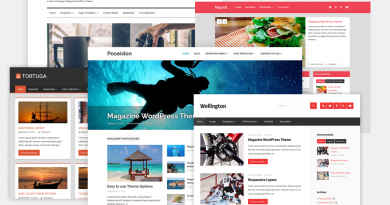Part 4 – Getting Started – the Tools Alphabet
Understanding the Tools
One of the more frustrating aspects of working with WordPress is the alphabet soup of tools required. Therefore, a quick overview seems in order. These definitions are meant to get you started as they are obviously more complex than what is explained here.
- HTTP/HTTPS (“hypertext transport protocol”) – In plain English, HTTP/HTTPS is the protocol (shared language) used to request or send data through a browser on the internet. Of course, there are more nuances that this definition, but this is sufficient to get started. The “S” simply means that the communication channel is “secure” which most sites now require.
- HTML (“Hypertext Markup Language”) – a markup language refers to the way tags are used to define the page layout and elements within the page. Examples of HTML would be “header”, “paragraph”, “footer” and many other standard and user-defined tags.
- CSS (“Cascading Style Sheets“) – a defined styling language. Using CSS tells the browser what size, color, and spacing the text displays. It can also animate objects, make them disappear, and reappear. What makes CSS so complex is that styles can be cascaded – meaning the initial definition is subsequently (intentionally) overridden by later styles. When a single block of text goes through 4 iterations, it creates complexity in resolving where the problem surfaced
- Javascript (not to be confused with Java even though they sound similar) – this is a rapidly evolving programming language that can be processed by the browser. What this means, is that a website can download a block of Javascript to your browser so that the hard work is done by your system instead of the website server. This also results in higher application performance so that the browser seems more responsive as it skips the roundtrip request to the website server
- PHP (“Hypertext Preprocessor“) – a server-based programming language that generates content for the browser. Content can include HTML, CSS, Javascript, or other specialized objects. The purpose is to pull information from the server and process it for display (consumption) by the browser (Chrome, FireFox, or Explorer) on your device.
- Templates – WordPress templates form the building blocks of your site. A single web page is generated from multiple templates, which contain the raw text, tagged with HTML, styled with CSS, animated by Javascript, and assembled by PHP. A template normally contains a major page element such as the “header”, the “footer”, or the “right sidebar”. Instead of tackling the entire page, WordPress templates let you work on small parts of the page. These parts are then assembled into the full page that visitor to your site will see.
- WordPress – a blogging platform that is written (primarily) in PHP. It provides the functionality to create, edit, style, and post blog articles and also the functionality to serve up this content when someone visits your blog or website. WordPress utilizes all of the above tools – HTTP/HTTPS, HTML, CSS, Javascript, and PHP
WordPress Provides Great Documentation
At first, making modifications to WordPress can feel overwhelming. Where do you even start? Our recommendation is to start at a high level. Understand the big picture of how the various pieces of WordPress fit together before getting bogged down in the details of CSS stylesheets. WordPress provides extensive and well-written documentation and that is where we will start. Assuming you know little or nothing about WordPress, the place to begin is understanding “Templates” – the basic building blocks of your site. Once you understand how templates fit together into pages, then you can understand “Themes” which are prepackaged bundles of WordPress customizations. At that point, you can start to dive in to the details – HTML, CSS, Javascript, and PHP. You will understand how these lower level components fit into the larger picture.
Learning WordPress is Optional
Keep in mind, learning WordPress at this level of detail is optional. In fact, you may not even want to learn any of this – just hire people to take care of all the details. Depending on your resources, that can actually be the best route. However, if you decide to learn WordPress in detail, we suggest you start CLICK HERE. Scroll down to “Templates” (towards the bottom of the page) and begin there.


